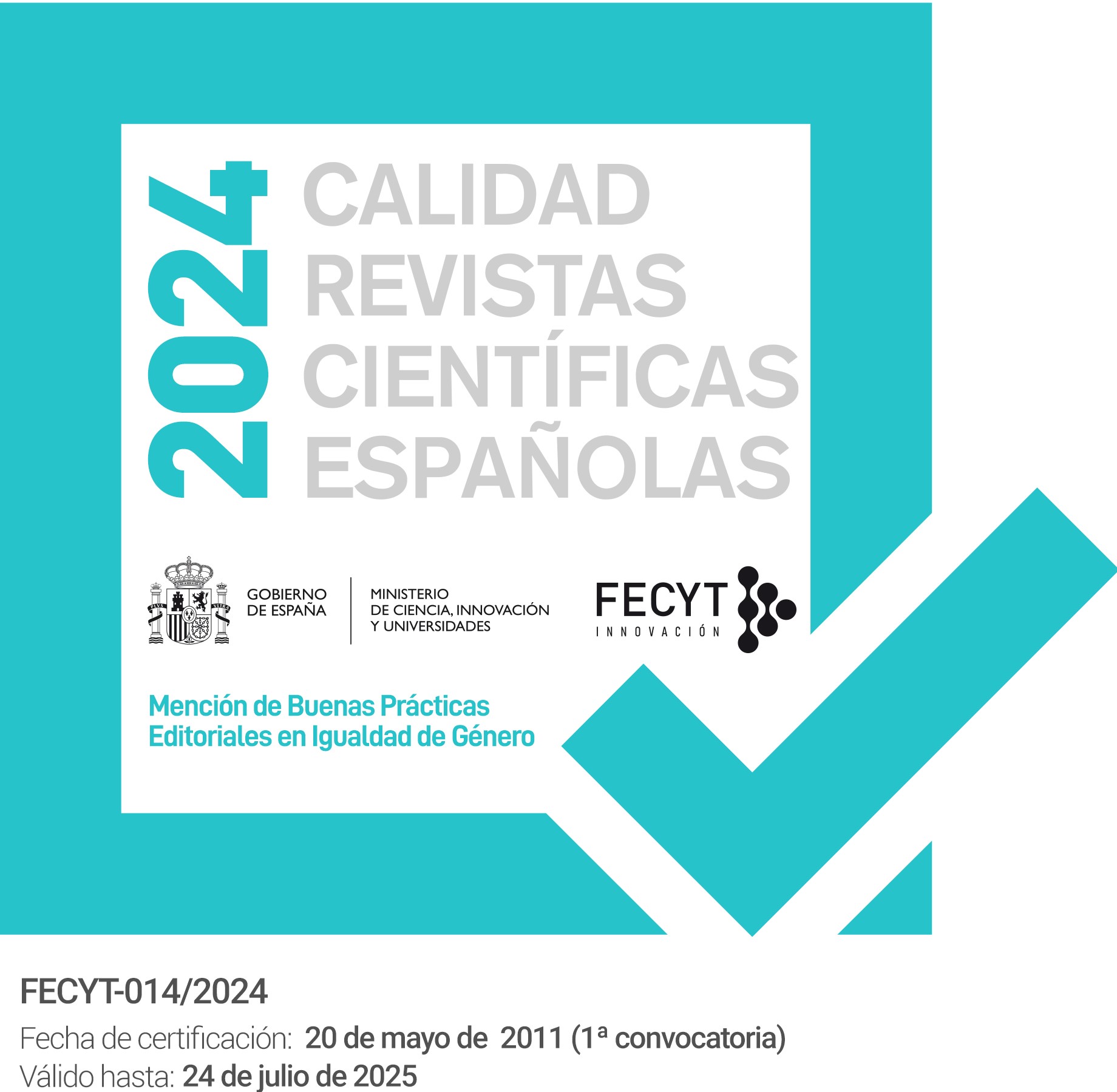La migración internacional y las condiciones de vida: explorando el caso colombiano
DOI:
https://doi.org/10.14422/mig.i40.y2016.013Palabras clave:
Migración internacional, calidad de vida, condiciones de vida, desarrollo económico, Colombia.Resumen
Este trabajo explora la relación causal entre la migración internacional y las condiciones de vida de los hogares colombianos, medidas a través de un indicador multidimensional. Se usaron los datos de la Encuesta Nacional de Demografía y Salud (ENDS) del año 2010 y se estimó un modelo de regresión por Mínimos Cuadrados Ordinarios (MCO). Se encontró que las condiciones de vida estaban asociadas con la ubicación geográfica y la composición del hogar. El análisis descriptivo evidenció diferencias estadísticamente significativas entre las condiciones de vida de los hogares con migrantes y sin migrantes en algunos departamentos del país. Sin embargo, los resultados del modelo por MCO no apoyan estos hallazgos a nivel nacional y difieren de los resultados de otras investigaciones.
Descargas
Citas
ACOSTA, P. (2006): Labor Supply, School Attendance, and Remittances from International Migration: The Case of El Salvador. World Bank Policy Research Working. Paper 3903.
ACOSTA, P., FAJNZYLBER, and López, J. H. (2007): The Impact of Remittances on Poverty and Human Capital: Evidence from Latin American Household Survey. World Bank Policy Research Working Paper 4247.
ADAMS, J. R., RICHARD, H. and CUECUECHA, A. (2010): “Remittances, Household Expenditure and Investment in Guatemala”. World Development, 38(11), pp. 1626-1641.
ANTON, J.-I. (2010): “The Impact of Remittances on Nutritional Status of Children in Ecuador”. International Migration Review, 44(2), pp. 269-299.
AVELLA, B., & OLIVA, M. (2010): Comparación del análisis factorial múltiple (AFM) y del análisis en componentes principales para datos cualitativos (Prinqual), en la construcción de índices. Bogotá, Universidad Nacional de Colombia.
BANCO MUNDIAL (2014): Las remesas hacia países en desarrollo crecerán 5% este año, aunque la migración forzada a causa de conflictos está en un nivel muy alto, según informe del Banco Mundial. Comunicado de prensa, octubre 6. [En línea] disponible en: http://www.bancomundial.org/es/news/press-release/2014/10/06/remittances-developing-countries-fivepercent-conflict-related-migration-all-time-high-wb-report (Consulta: Agosto 5 2015).
BATTAGLIA, M. (2015): “Migration, health knowledge and teenage fertility: evidence from Mexico”. SERIEs, Springer, 6: pp. 179-206.
BEDOYA, R. Y. (2014): Migración internacional y remesas: hacia un desarrollo humano sustentable, el caso de Cali, Colombia. Tesis de Maestría. Universidad Autónoma de Nuevo León Instituto de Investigaciones Sociales.
CÁRDENAS, M.; MEDINA, C y TREJOS, A. (2010): Measuring economic and a social impacts of migration in Colombia: New evidence. Borradores de Economía. No. 601.
CARLETTO, C.; COVARRUBIAS, K. y MALUCCIO, J. A. (2011): “Migration and child growth in rural Guatemala”. Food Policy, 36(1), pp. 16-27.
CASTAÑO, E. (2010): Introducción al análisis de datos multivariado en ciencias sociales. XII Seminario de Estadística Aplicada, Medellín, Colombia.
CHOLDIN, H. M. (1973). “Kinship networks in the migration process”. International Migration Review, 7(2), pp. 163-176.
DE HAAS, H. (2010): “Migration and development: a Theoretical Perspective”. International Migration Review. 44(1), pp. 227-267.
FRISANCHO R. V. and OROPESA, R. S. (2011): “International Migration and the Education of Children: Evidence from Lima, Peru”. Population Research and Policy Review, 30(4), pp. 591-618.
FORONDA, C. A., NICOLAEVA, M. Y. y NOGALES, R. (2009): “Migración internacional: una cuantificación de sus efectos en la calidad de vida”. UPB – Investigación y Desarrollo, 9, pp. 44-57.
HILDEBRANDT, N., MCKENZIE, D. J., ESQUIVEL, G., & SCHARGRODSKY, E. (2005): “The effects of migration on child health in Mexico”. Economia. 6(1), pp. 257-289.
HU, F. (2013). “Does migration benefit the schooling of children left behind?: Evidence from rural northwest China”. Demographic Research, 29, pp. 33-70.
JONES, R. C. (1998): Remittances and inequality: A question of migration stage and geographic scale. Division of Social and Policiy Sciences, The University of Texas. [En línea] Disponible en: http://onlinelibrary.wile.com/doi/10.1111/j.1944-8287.1998.tb00102.x/epdf
KAISER, H. F. (1974): An index of factorial simplicity. Psychometrika, 39 (1), pp. 31-36.
KOC, I., & ONAN, I. (2004): “International Migrants’ Remittances and Welfare Status of the Left Behind Families in Turkey”. International Migration Review, 38(1), pp. 78-112.
KRUSKAL, J. B., & SHEPARD, R. N. (1974): “A nonmetric variety of linear factor analysis”. Psychometrika, 39 (2), pp. 123-157.
KUHFELD, W. F. (1990): The PRINQUAL procedure. SAS/STAT User’s Guide. 2:1265-1323.
MCKENZIE, D. (2005): “Beyond remittances: the effects of migration on Mexican households”. In OZDEN, C. and SCHIFF, M. (eds.). International Migration, Remittances, and the Brain Drain. Washington, D.C., World Bank/Palgrave Macmillan.
MASSEY, D. S. (1988): “Economic development and international migration in comparative perspective”. The Population and Development Review, 14(3), pp. 383-413.
MASSEY, D. S., ARANGO, J., GRAEME, H., KOUAOUCI, A., PELLEGRINO, A., & TAYLOR, J. E. (1994): “An evaluation of international migration theory: The North American case”. Population and development Review, 20(4), pp. 699-751.
MINES, R. (1981): Developing a community tradition of migration to the United States: a field study in rural Zacatecas Mexico and California settlement areas. Monograph, San Diego, Centro de Estudios sobre Estados Unidos y México, Universidad de California. Vol. 3.
MINISTERIO DE RELACIONES EXTERIORES (2013): Análisis de la población colombiana en el exterior.
MUGHAL, A. G., CIPUSHEVA, H. and ABAZI, H. (2009): Migration, Remittances and the Standards of Living in the Republic of Macedonia (A Report Based on the Quality of Life Survey). [En línea] Disponible en: http://www.seeu.edu.mk/files/research/magchah-report-final.pdf (Consulta: julio 30 2015)
NACIONES UNIDAS (2014): Asamblea General. Migración internacional y Desarrollo. Informe del Secretario General.
NUSSBAUM, M. and SEN, A. (2002): La calidad de vida. Fondo de Cultural Económica, México.
PEDONE, C. (2010): “Cadenas y redes migratorias: propuesta metodológica para el análisis diacrónico-temporal de los procesos migratorios”. Empiria, Revista de metodología de ciencias sociales, (19), pp. 101-132.
PIORE, M. J. (1979): Birds of Passage: Migrant Labor in Industrial Societies. New York, Cambridge University Press.
PORTES, A. and DE WIND, J. (2006): Repensando las migraciones. Nuevas perspectivas teóricas y empíricas. México, Universidad Autónoma de Zacatecas/ Miguel Ángel Porrúa.
PROFAMILIA (2011): Encuesta Nacional de Demografía y Salud 2010. Informe. [En línea] Disponible en: https://www.minsalud.gov.co/sites/rid/Lists/BibliotecaDigital/RIDE/VS/ED/GCFI/Base%20de%20datos%20ENDS%202010%20informe.pdf (Consulta: Septiembre 30 2016)
PROGRAMA DE NACIONES UNIDAS PARA EL DESARROLLO, PNUD. (2015): Informe sobre Desarrollo Humano 2015. [En línea] Disponible en: http://desarrollohumano.org.gt/wp-content/uploads/2016/04/hdr_2015_report_sp.pdf. (Consulta: Septiembre 24 2016).
ROA, M. G. (2012): “Remesas y vulnerabilidad sociodemográfica, en hogares de estratos medios-bajos de Cali”. Sociedad y Economía, 22, pp.187-210.
SAS Institute. (2011): SAS/IML 9.3 User’s Guide. SAS Institute.
SASSEN, S. (2006): “La formación de las migraciones internacionales: implicaciones políticas”. Revista Internacional de Filosofía Política, 27, pp. 19-40.
SEN, A. (2010): Nuevo examen de la desigualdad. España, Alianza Editorial.
SIEGEL, S., & CASTELLAN, N. J. (1988): Nonparametric statistics for the behavioural sciences. New York, USA, McGraw Hill.
SUNIL, T. S., FLORES, M., & GARCIA, G. E. (2012). “New evidence on the effects of international migration on the risk of low birthweight in Mexico”. Maternal & child nutrition, 8(2), pp. 185-198.
STARK, O. (1991): The migration of Labor, Cambridge, Basil Blackwell.
TAYLOR, J. E. (1999): “The New Economics of Labor Migration and the Role of Remittances in the Migration Process). International Migration, 37(1), pp. 63-88.
TODARO, M. P. (1969): “A Model of Labor Migration and Urban Unemployment in Less-Developed Countries”. American Economic Review, 59, pp. 138-148.
TOVAR, L. M. y VÉLEZ, J. S. (2007): “Los efectos de la migración internacional en las condiciones de vida de los hogares colombianos”. Desarrollo y Sociedad, segundo semestre 60, pp. 155-197.
VELÁSQUEZ, S. P. (2014): “Ser mujer jefa de hogar en Colombia”. Revista de la información básica. 4(2). Revista virtual. [En línea] Disponible en: https://sitios.dane.gov.co/revista_ib/html_r8/articulo4.html (Consulta: Septiembre 25 2016)
VICTORIA, M. T. y TOVAR, L. M. (2009): “Migración internacional y educación: una aproximación al efecto sobre la asistencia escolar en Colombia”. Cuadernos de Economía, 51(28), pp. 175-204.
WIEST, R. E. (1984): External dependency and the perpetuation of temporary migration to the United States. Patterns of Undocumented Migration: México and the United States. Richard C. J. (ed.), Totowa, Rowman and Allanheld.
WOLF, E. R. (2005): Europa y la gente sin historia. México, Fondo de Cultura Económica.
WOODRUFF, C. and ZENTENO, R. (2007): “Migration Networks and Microenterprises in Mexico”. Journal of Development Economics, 82, pp. 509-528.
YOUNG, F. W. (1981): “Methods for Describing Ordinal Data with Cardinal Models”. Journal of Mathematical Psycology, 12, pp. 416-436.
YOUNG, F. W., TAKANE, Y., & de LEEUW, J. (1978): “The Principal Components of Mixed Measurement Level Multivariate Data: An Alternating Least Squares Method with Optimal Scaling Features”. Psychometrika, 43, pp. 279-281.
Descargas
Cómo citar
Número
Sección
Licencia
Los autores de artículos aceptados en la revista Migraciones conservan los derechos de propiedad intelectual sobre sus trabajos y otorgan a la revista los permisos de distribución y comunicación pública de los mismos, consintiendo que se publiquen bajo una licencia Creative Commons NonCommercial-NoDerivatives-Attribution 4.0 International License. Se recomienda a los autores publicar su trabajo en Internet (por ejemplo en páginas institucionales o personales, repositorios, etc.) respetando las condiciones de esta licencia y citando debidamente la fuente original.






